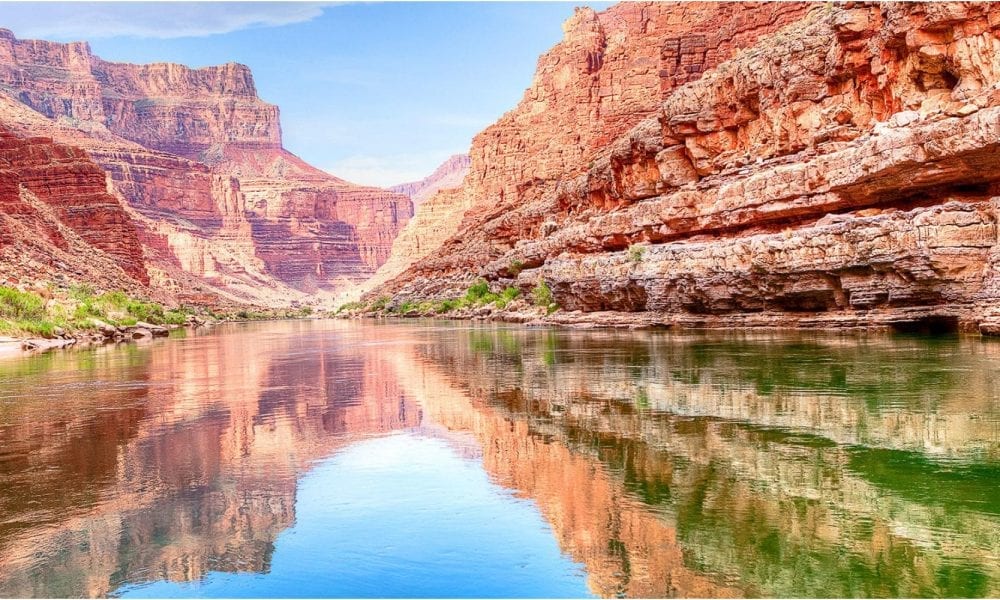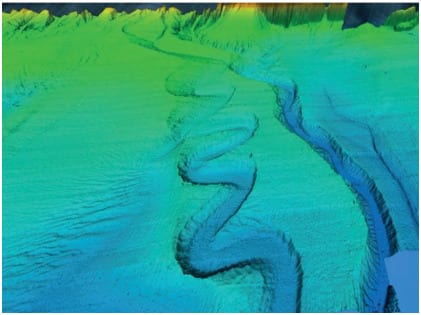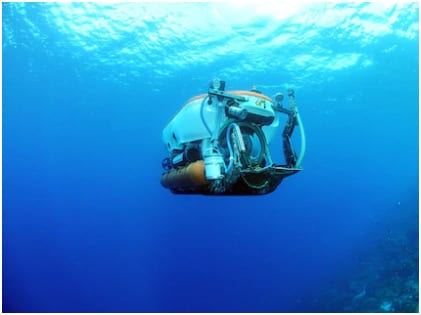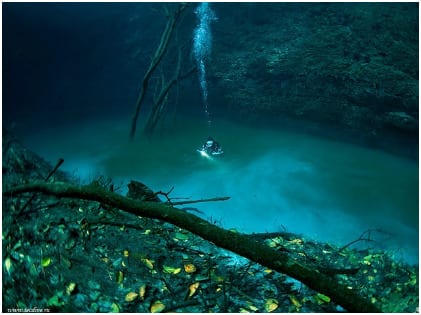
What Rivers Have Been Hiding – And How Amazing It Truly Is!

There is a river that cascades around towers of monstrous, towering rock, in a deep gorge. This river winds across a vast plain and features torrents with a force that rivals that of the Colorado River which has been known to have carved the Great Grand Canyon. However, this river isn’t featured on a map, nor does it appear in pictures taken by tourists. This is because it’s a river that happens to flow 3.2 miles below the surface of the vast Pacific Ocean.
 This undersea river is responsible for the shaping of the Monterey Canyon over millions of years. The water travels out of the mouth of the Canyon and into a valley cut through the seabed that actually extends for almost 200 miles before it spills into the deep sea. This channel is not the only of its kind. There are many similar channels that have been etched into seabeds across the globe, some discovered, and still more waiting to be discovered. Channels have been uncovered off the coast of the Amazon, Greenland, Bengal and the Congo. The largest channels reach several miles across and run for still more thousands of miles into the depths of the ocean. The channels are a source of vital sustenance to marine creatures. As incredible as they are, undersea rivers happen to be one of the least understood natural phenomena in the world.
This undersea river is responsible for the shaping of the Monterey Canyon over millions of years. The water travels out of the mouth of the Canyon and into a valley cut through the seabed that actually extends for almost 200 miles before it spills into the deep sea. This channel is not the only of its kind. There are many similar channels that have been etched into seabeds across the globe, some discovered, and still more waiting to be discovered. Channels have been uncovered off the coast of the Amazon, Greenland, Bengal and the Congo. The largest channels reach several miles across and run for still more thousands of miles into the depths of the ocean. The channels are a source of vital sustenance to marine creatures. As incredible as they are, undersea rivers happen to be one of the least understood natural phenomena in the world.
The rivers hidden beneath the surface of the oceans are much like the rivers we see on land, complete with banks and smaller tributaries that feed the larger rivers. They flow and carve the surface of the seafloor and follow meandering paths, change course and even result in abandoned sections as we see occurring on land.
These undersea rivers came to light when sonar mapping of the sea bed was done in the 1980s, which revealed them. It was after the 1990s that some knowledge on how the channels formed was gleaned after scientists invested time and energy in investigating the channels. They drilled into the sediments of the seabed and found through careful inspection of the sediment cores that the channels have formed through repeated deposits of sediment that spilled down the channels. This shed light on the fact that the rivers beneath the surface of the ocean were actually rivers of silt and sand rather than freshwater as on the land.
 Studying these channels have proven to be difficult given the fact that they travel at extreme depth, up to 2.5 miles. Depths of this nature require highly specialized marine equipment that is remote controlled. Even them, the rivers flow some of the time, not continuously.
Studying these channels have proven to be difficult given the fact that they travel at extreme depth, up to 2.5 miles. Depths of this nature require highly specialized marine equipment that is remote controlled. Even them, the rivers flow some of the time, not continuously.
So far, the rivers we have discussed do not have much life around them owing to the intense cold and pressure, and certainly no plant life, but an amazing discovery beneath the surface of the Black Sea revealed an underwater river complete with trees, waterfalls and plenty of vegetation. The volume of water flowing through this incredible discovery is approximately 350 times larger than that of the River Thames and roughly 10 times that of the Rhine, which is Europes largest river.
The finding is a source of information on how there are forms of life that cope with surviving in such depths of the oceans. So far from the nutrient-rich waters that circulate close to land. The river is approximated at 115 feet deep at its deepest and has the terrestrial features like rapids and waterfalls, which were found through robotic submarines. The water is far denser than the surrounding water as it is highly saline and contains a lot of sediment.
This channel has led scientists to believe that they may serve an important role in the delivery of nutrients to the ocean, much like arteries for the ocean. Another key difference and an interesting difference between the underwater rivers and those on land is that the water spirals in the opposite direction when compared to the spirals of the water in rivers on land.
 The river beneath the surface of the sea surrounding Mexico has been called ‘Cenote Angelita’ and was discovered by a group of divers, and specifically by Anatoly Beloshchin.
The river beneath the surface of the sea surrounding Mexico has been called ‘Cenote Angelita’ and was discovered by a group of divers, and specifically by Anatoly Beloshchin.
It is expected that many more rivers like these will be found in the near future. And we can’t wait to see the results.
More in Entertainment
-
`
Why 50-Year-Olds Are Looking for a Career Change
In today’s fast-paced and ever-evolving job market, it’s not uncommon to see individuals in their 50s embarking on new career paths....
November 20, 2023 -
`
Why Mortgage Demand Is Crashing as Interest Rates Skyrocket
Imagine having a favorite local ice cream shop that suddenly jacked up its prices by 50%. You would probably think twice...
November 18, 2023 -
`
Santo Spirits | Sammy Hagar and Guy Fieri’s Joint Venture
In the world of entrepreneurial partnerships, some unions are destined for greatness. The unexpected alliance between Sammy Hagar, the iconic Van...
November 12, 2023 -
`
Branded Content: A Genuine Way to Connect With Your Audience
Have you ever binge-watched a series on Netflix, only to later realize that the beverage everyone’s sipping on is that brand...
November 3, 2023 -
`
Southwest Airlines Tackles Passenger and Labor Challenges
Southwest Airlines, a prominent player in the aviation industry, has found itself at a crossroads, facing a combination of passenger dissatisfaction...
October 28, 2023 -
`
Everything You Need to Know About Blended Interest Rates
Hou ever blended a smoothie and thought, “How on Earth do my strawberries, spinach, and protein powder come together to taste...
October 17, 2023 -
`
The Osbournes ‘Relaunch’ Podcast After 5 Year Break
If you were glued to your TV in the early 2000s, there is no way you missed the hilarious, raucous, and...
October 10, 2023 -
`
Tesla in China: Back-to-Back Price Drops, But No Sales Jump?
As temperatures soared in the summer of 2023, Tesla seemed to be heating things up in the Chinese market too. A...
October 6, 2023 -
`
Navigating Red Flags in the Workplace
In the journey of our careers, it’s not uncommon to encounter red flags in our jobs that signal potential issues or...
September 30, 2023















You must be logged in to post a comment Login